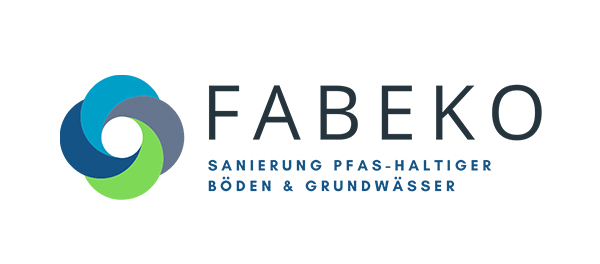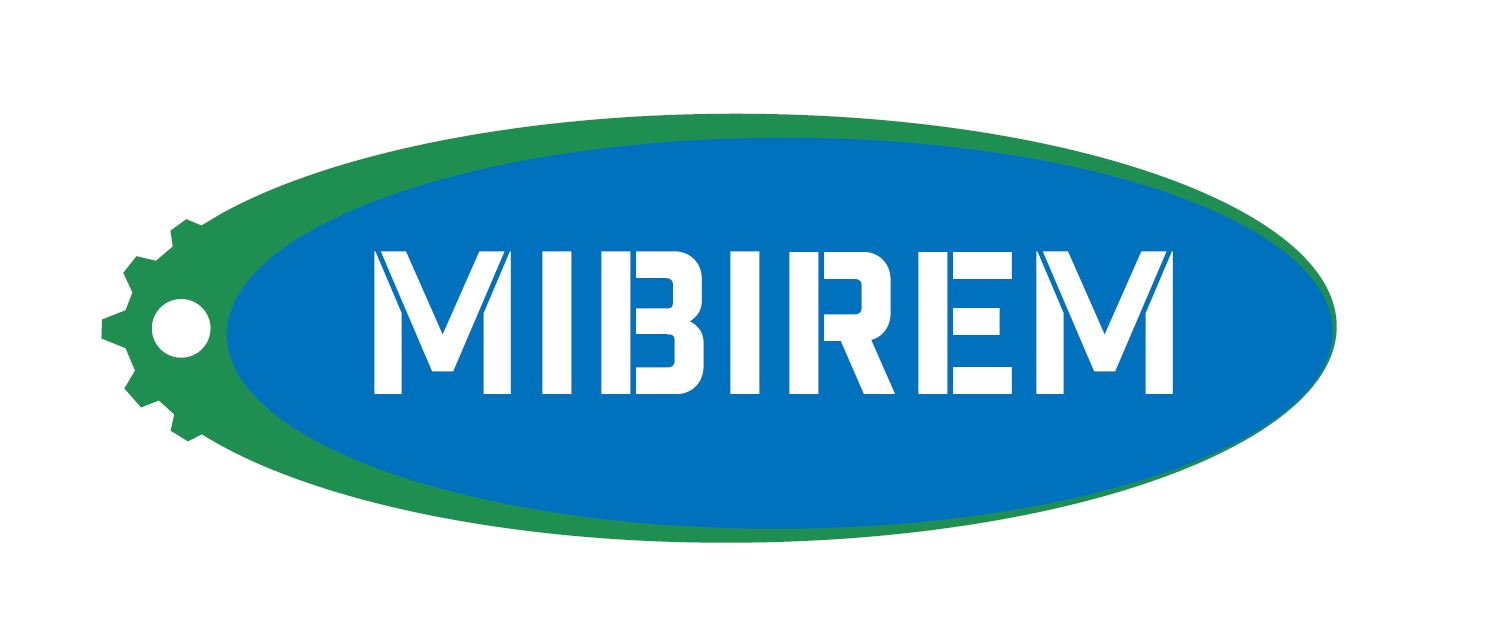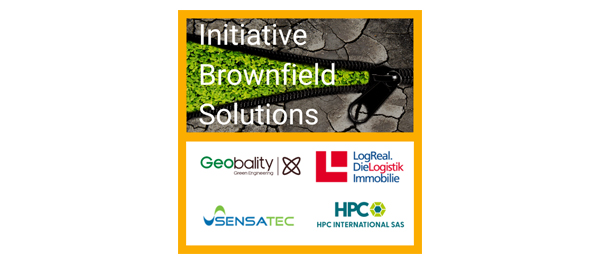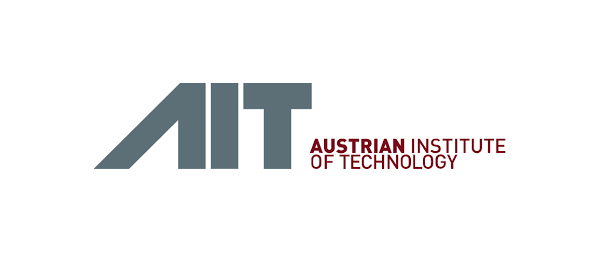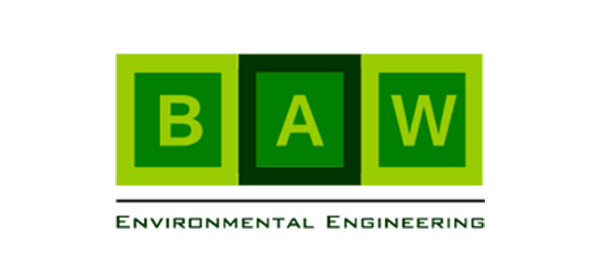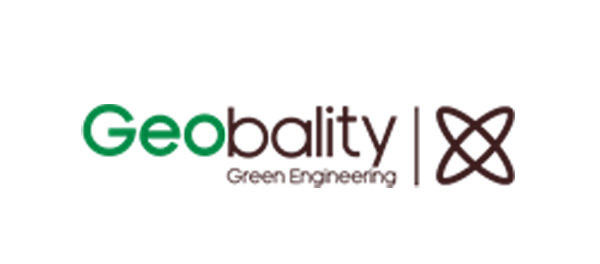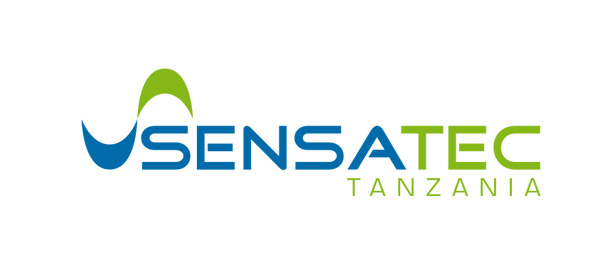SERVICES SENSATEC
Remediation of environmental damages
Sensatec is a provider of sophisticated technologies for the remediation of environmental damages in the subsurface. We provide for you concepts, cost-conscious implementation and expertise for physical extraction processes (e.g. for PFAS remediation), aerobic and anaerobic biological remediation technologies as well as chemical oxidation and reduction processes (ISCO, ISCR).
Sensatec also offers special expertise in special plant engineering from its own production. By using In-situ sensor technology from our in-house electrical engineering and programming department, we realize essential sensor-based monitoring of crucial processes in the subsurface for you. In this way, we achieve the greatest possible reliability of results for your project.
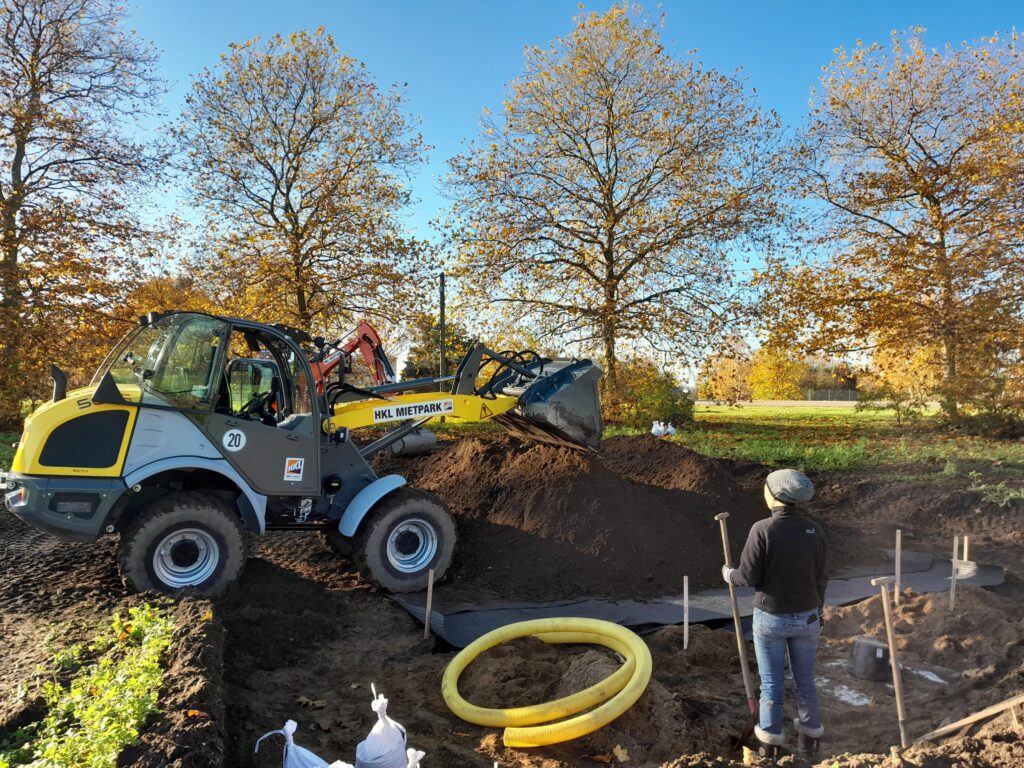
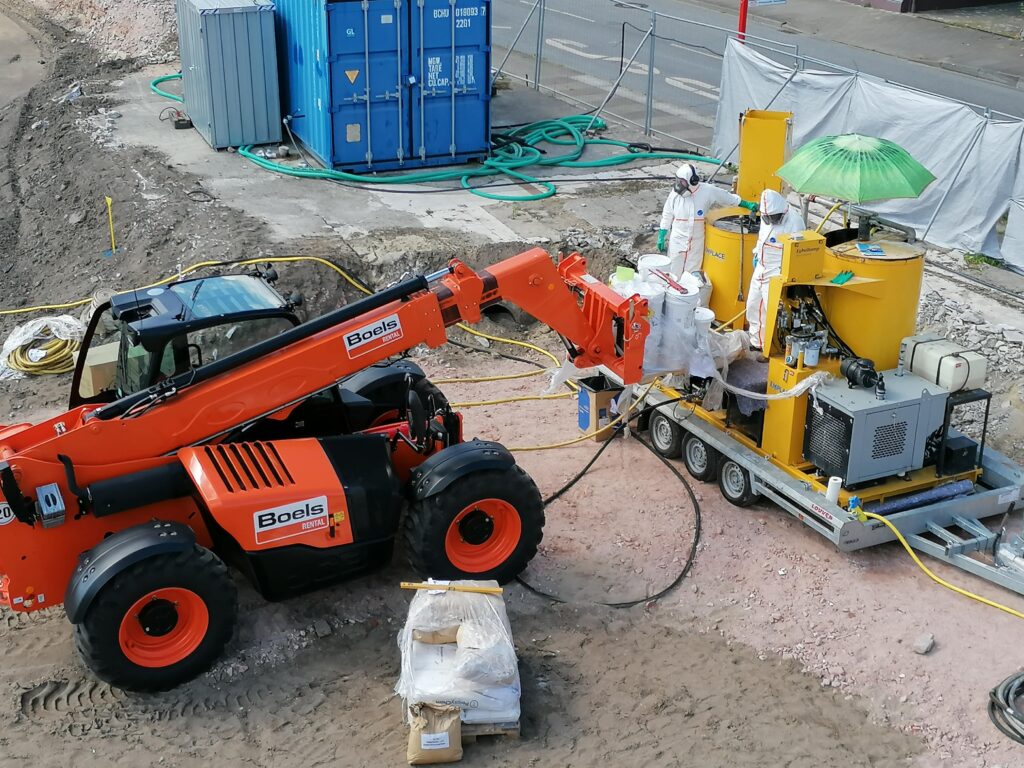
PFAS-remediation
Together with strong partners from research and engineering companies we developed for the remediation of PFAS-contaminated sites a powerful technology for the separation and leaching of PFAS from contaminated soil bodies. The effectiveness of this technology has been demonstrated both in in-situ applications and using an on-site pile technology to clean PFAS-contaminated soils.
As an alternative to PFAS leaching, Sensatec also offers processes for immobilizing PFAS in groundwater as well as in soil. This involves the use of high-performance adsorbents for PFAS based on adsorption resins as well as special activated carbons, which are either mixed with the soil material or applied to the subsoil in a site-stable manner using our special solid injection techniques.
Biological remediation methods
Sensatec has great expertise in the technical planning and realization of biological remediation processes from > 100 projects (realizations). Among other things, the company can also rely on its own special microbial cultures, e.g. for aged TPH, for MtBE, for CHC and PAH, which are cultivated on a large scale in its own biotechnology center. The active substances required for biostimulation in the subsurface are very cost-effective, making biological remediation processes particularly suitable for the remediation of large-scale environmental contamination. The range of processes extends from the targeted introduction of gaseous active substances (air, oxygen, other gas mixtures), to liquid reagents (nutrients, electron donors), e.g. via groundwater circulation processes, to the introduction of solids with long-term effects (e.g. cellulose, chitin, kelp meal, in some cases together with nano-iron products) by means of our TSE method for the stimulation of reductive CHC reduction.
Remediation services
Reductive dechlorination of CHC groundwater pollution
^Reductive dechlorination of CHC groundwater pollution
Many multi-chlorinated pollutants can only be biologically degraded under highly reducing environmental conditions and the presence of specialized dechlorinating microorganisms.
Sensatec has a large portfolio and expertise for the introduction of the corresponding reagents. We are the only company in Germany that grows the corresponding dechlorinating special cultures in our own production and have the molecular biological tools to detect these degradation specialists. So we can offer you the greatest possible certainty of success in the implementation of your remediation project.
Reagent infiltration and injection
Biological processes in the subsurface must be « fed » so that they run as quickly and effectively as possible.
Our product range includes a wide variety of « biostimulants » that are selected for you on a site-specific basis, depending on the type of pollutant and the milieu conditions, in the course of preceding laboratory analyses. We realize the reagent infiltrations for you at the site, which can be carried out via well systems, input levels (infiltrations) or via borehole injections directly via the drilled injection rods (injections). The latter method would be particularly economically very attractive for you if long-term active substances are to be injected only once for your remediation project.
Biosparging
In the particularly simple case, biological degradation processes in the subsurface can simply be stimulated by injecting air into the groundwater. Some of the oxygen supplied via the air dissolves in the groundwater and can be respired by the pollutant-degrading microorganisms. Because relatively large amounts of air are introduced into the subsurface to provide adequate oxygen, the subsurface air must be allowed to escape. This requires well permeable, non-stratified subsoils. In the case of highly volatile pollutants, biosparging quickly causes pollutants to move into the unsaturated soil zone, which must also be treated then.
We build and deliver the technical design as well as turnkey plants for the realization of biosparging processes for groundwater treatment, if necessary also in combination with soil vapor extraction.
Bioxwall method, direct gas injection
In complexly structured, possibly stratified aquifers and in highly oxygen-consuming structures, direct oxygen gas injection is an alternative to biosparging.
We hold an exclusive license for the construction and execution of the Bioxwand process, a gas injection process. In this process, an oxygen gas depot is built up in the aquifer in the form of fine-bubble gas distribution, through which oxygen is continuously injected into the passing groundwater. This process has proved very successful for the treatment of a wide range of pollutants, e.g. BTEX, vinyl chloride, chlorobenzenes, PAH, TPH and ammonium compounds. We have already been able to use it with great success in a wide variety of geological structures.
Aerobic and anaerobic bioaugmentation methods
Often, a microbial community has developed on contaminated sites that has adapted excellently to the respective pollutant presence and can even degrade it under adverse conditions. In such a case, experience has shown that it is sufficient to supply these site-specific (autochthonous) microorganisms with appropriate reagents such as oxygen and/or nutrients so that they can carry out their degradation activities with improved efficiency.
With the help of our many years of experience and our broad selection of our product range, we are able to decide which active reagent is most suitable for your individual remediation project.
However, there are many sites where no degradative microbial community can develop. This is particularly common in reductive CHC degradation processes, where natural biodegradation of PCE and TCE often stops at the cis-dichloroethene stage. In such cases, the supply of off-site and highly degradative microorganisms can be extremely effective in supporting the natural self-purification forces at the site.
Sensatec GmbH offers bioaugmentation cultures and their introduction technology for a wide range of biodegradable pollutants. If required, we will cultivate site-specific microorganism communities on a large scale for your remediation project.
However, there are many sites where no degradative microbial community can develop. This is particularly common in reductive CHC degradation processes, where natural biodegradation of PCE and TCE often stops at the cis-dichloroethene stage. In such cases, the supply of off-site and highly degradative microorganisms can be extremely effective in supporting the natural self-purification forces at the site.
Sensatec GmbH offers bioaugmentation cultures and their introduction technology for a wide range of biodegradable pollutants. If required, we will cultivate site-specific microorganism communities on a large scale for your remediation project.
Chemical remediation methods
The use of chemical remediation methods can be an attractive process variant for the rapid remediation of a soil or groundwater contamination. For this purpose, strongly effective chemicals, such as oxidizing agents or reducing agents, are usually introduced into the subsurface in order to chemically destroy the respective contaminants, especially in sources of damage. Crucial to the effectiveness of these processes is good contact between the active ingredient and the contaminant, and good coordination of the active ingredient application with the site-specific geochemical characteristics. Sensatec offers you comprehensive expertise and application experience for almost all oxidants commonly used in in-situ remediation for contaminant dissolution – ranging from peroxide-based agents, to permanganates, to persulfates and percarbonates. We will select the most promising oxidant for your project from our comprehensive product range.
Remediation services
In-situ-chemical Oxidation (ISCO)
In-situ chemical oxidation (ISCO) usually involves the use of concentrated oxidants to wet-chemically oxidize and thus destroy contaminants in the subsurface. The advantages of this process technology is fast reaction speed and the low susceptibility to failure of the process.
We support you in the selection of the respective oxidation agent that is most suitable for your individual remediation project.
We can supply the oxidants in the form of liquid reagents, such as Fenton’s reagent or permanganate solutions. We also offer solid injection to achieve an oxidative agent depot, e.g. with persulfate mixtures or Provect-OX using the TSE injection technique.
We realize the technical execution for your remediation project. Please contact us!
In-situ-chemische Reduktion (ISCR)
Die In-situ-chemische Reduktion (ISCR) basiert auf der Zugabe von reduktiv wirkenden Stoffen, die Schadstoffe durch chemische Reduktion entweder abbauen (z.B. chlorierte Lösungsmittel) oder in ungefährlichere Stoffe überführen, wie z.B. bei der Chromatreduktion.
Sensatec verfügt über umfassende Anwendungserfahrung sowohl bei der Eingabe z.B. von reduktiv wirkenden Nano- und Mikro-Eisenprodukten als auch in der Anwendung der biologischen und chemischen Chromatreduktion.
Physical remediation methods
Physical remediation methods are particularly suitable where the pollutants cannot be destroyed by biological or chemical methods, i.e. especially for the group of PFAS and for heavy metals and metalloids.
We offer physical methods for your remediation project in which the pollutants are removed from the soil or groundwater via the air or water pathway and purified, or at least physically immobilized to such an extent that they cannot spread further in the environment and no longer represent an ecological hazard.
Remediation services
Pump and Treat
Pumping and treatment of contaminated groundwater extracted via wells at a polluted site is one of the oldest and most established methods in environmental remediation. When appropriately designed, it prevents the further spread of water-dissolved contaminants. However, only the pump-and-treat process as such has not proven to be particularly effective for efficient site remediation, as usually only a fraction of the contaminants are actually present in dissolved form in the water. In most cases, years, sometimes even decades of operation of these groundwater purification plants at the site are necessary so that the pollutants can be removed as far as possible from the source areas of the damage.
Sensatec GmbH offers the pump-and-treat method in combination with effective remediation measures, preferably using biological or chemical methods. We will be pleased to advise you! Please contact us!
Surfactant mobilization
The water solubility of many organic pollutants is relatively low. Where large pollutant masses have entered the subsurface, e.g. through accidents or leaks, these pollutants are present as non-water-soluble light liquid or heavy liquid phases (LNAPL or DNAPL). These phase components are difficult to pump out via groundwater pumping and cannot be removed in situ by microbial or chemical degradation processes. An effective and cost-efficient way to recover these phase fractions and activate them for remediation processes is the technique of surfactant mobilization.
Due to many years of research activities with this technique, we have extensive application experience in surfactant mobilization. Detailed expertise is available to Sensatec GmbH due to a recently completed R&D project that investigated the biological compatibility limits of surfactant use in combination with the dissolution of CHCs from residual phases.
We take care of your individual concern in your remediation project!
Immobilization methods for heavy metals
Heavy metals can neither be biodegraded nor chemically destroyed. A good and very economical alternative for the treatment of soils and groundwater containing heavy metals is a physical immobilization of the heavy metals.
For this purpose, we provide you with a whole range of special adsorbents from our range of active substances, some of which irreversibly bind the heavy metals into strongly adsorptive structures. We have extensive experience in the use of brominated activated carbons for mercury elimination (first application of this technology by Sensatec in Europe!), reductive reagents such as Metasorb or oxidative precipitation processes, e.g. for arsenic elimination.
Airsparging
The airsparging method can be used to transfer volatile organic compounds from the groundwater into the soil air.
For this purpose, we provide you with a soil vapor extraction system tailored to your remediation project, in which the air stream containing the pollutants is captured and subsequently purified by activated carbon. In case of well permeable subsoil conditions both in the groundwater and in the soil air, we can offer you this technique as a very effective method for the remediation of groundwater contamination e.g. of BTEX or CHC.
Remediation at difficult subsoils and overbuilt sites
Many of the processes described here and offered by Sensatec require that the active substances introduced into the subsurface for biological, chemical or physical in-situ remediation can also be effectively distributed there. It is crucial that the supplied active substances and the contaminants come into contact with each other as intensively as possible.
However, there are often geological formations in which environmental pollutants have been distributed but which are difficult to penetrate (bedrock), which represent hydraulic barriers (clay, silt horizons) or which have a very strong layered structure (glacial till). Because the all-important contact between contaminant and active ingredient is impeded, classic in-situ remediation methods do not work reliably. The situation is similar with heavily built-up industrial sites, where the damage source areas cannot be reached by using vertical drilling technology.
Sensatec offers special methods for these cases, which enable in-situ remediation very effectively in difficult geological structures as well as for heavily overbuilt sites.
Remediation services
TSE-method
With our TSE method, we offer you a special remediation technique with which we succeed in placing active substances in the subsurface even where the subsurface conditions do not permit effective distribution. For example, in solid rock, clay, loam or marl structures where there is hardly any water movement.
The process principle is based on a layer-by-layer high-pressure injection of biological or chemical agents, which are triggered during a drilling operation into the damaged areas approximately every 30 to 40 cm and successfully placed in the contamination area with a range of more than 5m in radius. The « sources of contamination » that are difficult to permeate are thus transformed into « remediation sources »: the active substances stored there after treatment are released into the groundwater instead of the contaminants.
Vertical and horizontal circulation cells
Vertical and horizontal circulation cells, when professionally applied, represent an excellent tool for the efficient distribution of active substances even in difficult geological structure.
With our many years of experience, we offer you the technical realization with regard to the skilful placement and use of circulation cells, even in geology that has been heavily deformed during the ice age, for biological and chemical in-situ remediation measures.
Inclined and horizontal drilling methods
If pollutants are located directly underneath production halls or even listed buildings and cannot be reached via vertical drilling inside a building, Sensatec can also gain access to the polluted area via one of its patented horizontal injection methods or via inclined drilling without having to enter the affected building.
We have the comprehensive know-how to successfully implement in-situ remediation even under difficult drilling conditions.
Environmental damage analyses
Feasibility studies of environmental remediation projects are carried out in our process engineering laboratory.
They are used to identify promising treatment steps, predict the use of active agents and analyze process-critical accompanying reactions.
In the molecular biology laboratory, specific genes directly related to crucial contaminant degradation processes are quantified.
This makes it possible to answer many questions, especially about reductive CHC degradation, much more precisely than with classical microbiological methods.
In our microbiological laboratory, high-performance microorganism cultures with specific capabilities for the degradation of your individual contaminant can be detected, analyzed and cultivated for you on a large scale for use in the field.
Sensatec is the only manufacturer in Germany of Dehalococcoides-containing high-performance microorganism cultures for anaerobic chloroethene degradation that can be used for bioaugmentation of chlorine contamination in groundwater. Bioaugmentation is suitable for sites where no degradation of CHCs could be detected under natural conditions or where no, only incomplete or very slow degradation of CHCs occurs in groundwater despite suitable environmental conditions and substrate supply.
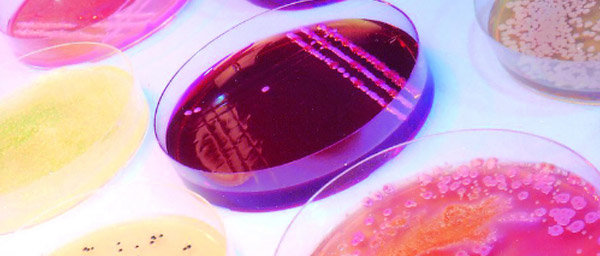
Our Laboratories
Process engineering Laboratory, Kiel
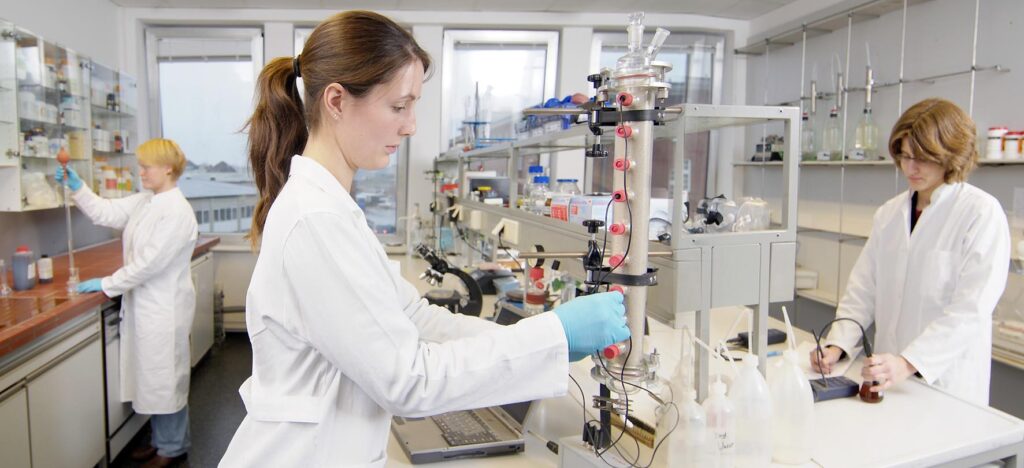
Our Process engineering Laboratory in Kiel is focused on conducting feasibility studies of environmental remediation projects. The objective of these investigations is to increase significantly the chances of success in remediation projects by providing site-specific data on microbial and chemical degradation performance as well as on process-critical accompanying reactions.
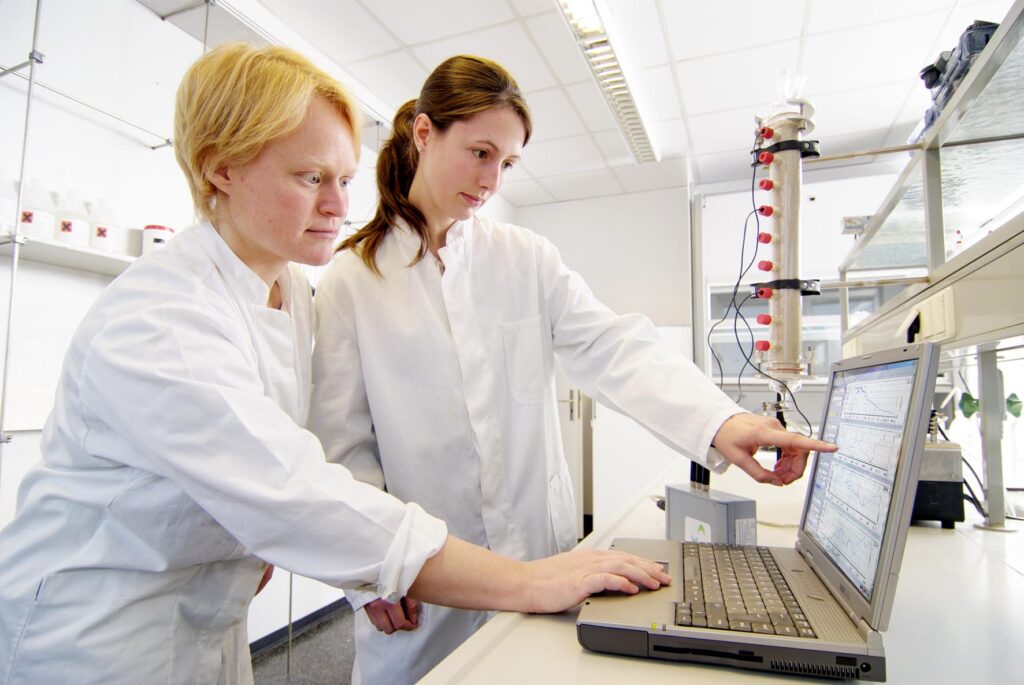
Frequently asked questions
- Is microbiological degradation potential present at the site and can microbial degradation be accelerated?
- What limiting site factors are currently restricting biodegradation?
- Can the contaminants detected at the site be degraded by means of chemical oxidation (ISCO) and what is the expected active agents consumption?
CONTACT
- M. Sc. Svantje Gottschlich
- Tel.: +49 (431) 389 009-0
- labor-kiel@sensatec.de
Molecular biological Laboratory, Berlin
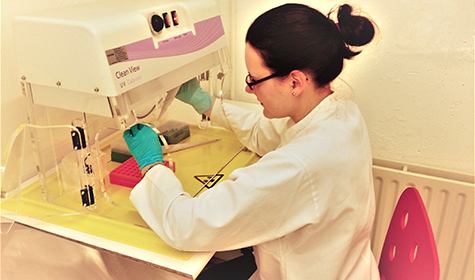
Many environmental contaminants can be degraded by microorganisms under certain conditions. Stimulation of these processes is a basic element of various approaches for In-situ remediation of contaminated sites. This requires a founded knowledge of microbial degradation mechanisms, the microorganisms with degradation ability and their enzyme systems.

With the help of molecular biological tools (MBT), such as quantitative real-time PCR and next generation sequencing (NGS), we are able to characterize the natural attenuation potential of microbial communities and quantify attenuation specialists (such as Dehalococcoides) and their functional genes. As a result, conclusions about the natural attenuation (NA) potential can be made and recommendations for suitable measures to stimulate the attenuation potential (enhanced natural attenuation, ENA) can be given.
CONTACT
- Dipl. Ing. Nancy Zittwitz
- Tel.: +49 (30) 809 415 77
- labor-berlin@sensatec.de
Applications MBT
- Quantifizierung von zum Abbau von Schadstoffen befähigten Mikroorganismen aus Grundwasser und Bodenproben zur Standortcharakterisierung (Quantifizierung taxonomischer Gene)
- Quantifizierung von funktionalen Genen für den Schadstoffabbau und biogeochemische Sekundärprozesse aus Grundwasser und Bodenproben zur Standortcharakterisierung (Quantifizierung taxonomischer Gene)
- Analyse von mikrobiellen Gemeinschaften zur Ermittlung von Natural Attenuation Potentialen
- Vorhersagen zu möglichen Akkumulationen von Metaboliten des mikrobiellen Schadstoffabbaus (bspw. cis-DCE oder VC beim Abbau von LCKW)
- Bestimmung der Notwendigkeit einer Biostimulation / Bioaugmentation
- Qualitätskontrolle von Augmentationskulturen
- Verlaufskontrolle bei erfolgter Biostimulation / Bioaugmentation Methoden.

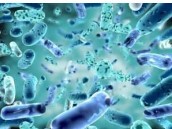
Frequently asked questions
- Is there sufficient potential for natural self-purification (MNA) or In-situ remediation (ENA) at the site?
- Is anaerobic or aerobic process control more promising for the establishment of In-situ biodegradation?
- Is there evidence of a risk of accumulation of metabolites such as c-DCE and VC during microbial reductive dechlorination of CHCs?
- Is the addition of special microbial cultures (bioaugmentation) useful or even necessary to achieve the remediation goals?
Analytical methods
Together with our partner Microbial Insights, we offer a comprehensive range of molecular genetic analyses to determine microbial contaminant degradation potentials.
CENSUS®
Quantification of single species or functional genes especially for the anaerobic degradation of CHC.
QuantArrayChlor®
Simultaneous quantification of individual microorganism species as well as functional genes for aerobic, cometabolic and anaerobic microbial degradation of chlorinated hydrocarbons.
QuantArrayBGC®
Simultaneous quantification of both individual microorganism species and functional genes involved in biogeochemical processes.
QuantarrayNSZD®
Simultaneous quantification of both individual microorganism species and functional genes involved in the dissolution, volatilization and biodegradation of pollutant phases.
QuantarrayPetro®
Simultaneous quantification of individual microorganism species as well as functional genes for aerobic, cometabolic and anaerobic microbial degradation of mineral oil-borne hydrocarbons such as BTEX, MTBE, toluene, ethylbenzene, benzene, xylene or naphthalene.
NextGeneration Sequencing (NGS)®
DNA sequences of microorganisms are detected, on the basis of which they can be assigned to their strains and families with their corresponding characteristics (enzyme spectrum, degradation pathways, etc.). NGS is suitable to describe the complete microbial community and to characterize the prevailing biogeochemical processes.
Molecular biological Laboratory, Cologne
As a rule, damage to the environment can only be repaired with the greatest possible help of nature’s self-cleaning powers. Countless microorganisms are available for this purpose, which, with the help of their enzymatic abilities, degrade, immobilize and render harmless pollutants. Our expertise serves to activate these self-healing powers of nature and to make them usable for the efficient, economical remediation of environmental damage.
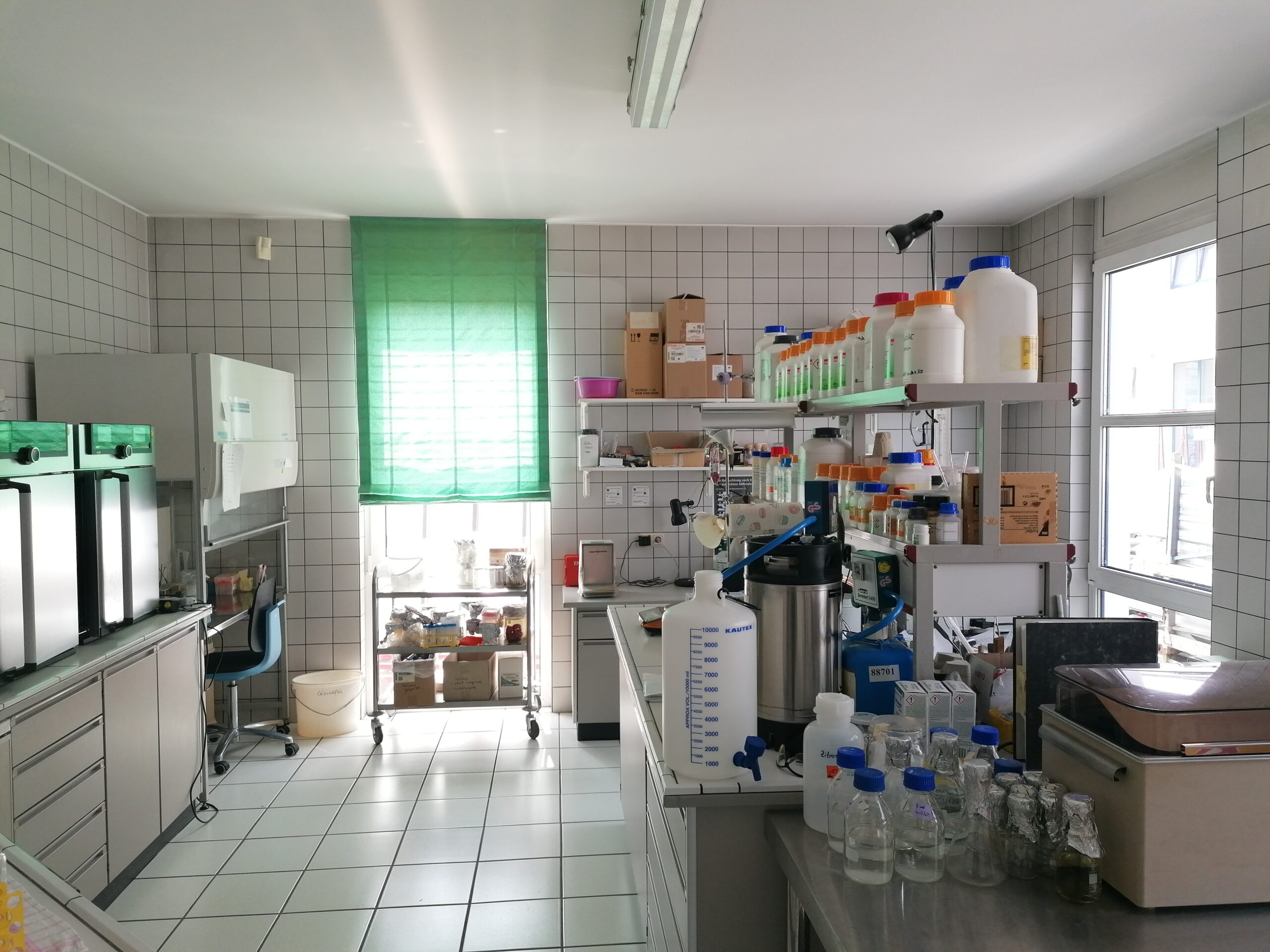
In preliminary laboratory tests, we check the presence of specific microorganisms from environmental samples. Using biological test series, we can show whether the bacteria naturally present at the remediation site are capable of effectively degrading the contaminants under optimized conditions such as oxygen and nutrient supply. Furthermore, degradation specialists from our bacterial strain are tested for their use. As a result, the tests lead to conclusions which biological remediation approach is expedient for the specific contamination.
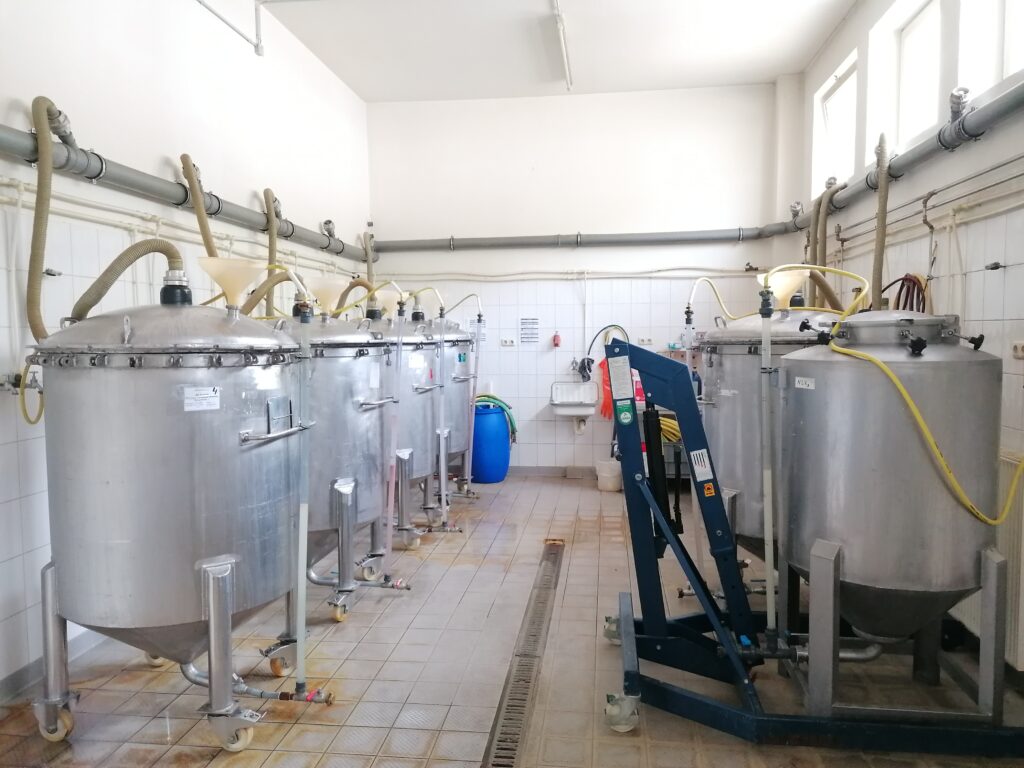
Bacterial mixed cultures that have shown specific degradation capacity in our laboratory degradation tests are permanently multiplied and included in our bacterial strain. In this way, we are able to stock appropriate specialists for many different groups of contaminants, which can be used for targeted application in the environmental remediation
CONTACT
- M. Sc. Jessica Beyert
- Tel.: +49 (2204) 9726-12
- koeln@sensatec.de
Research
Our ongoing research projects contribute to inventing even more effective remediation techniques and developing solutions for remediating emerging contaminants, such as PFAS.
We are currently working on the following research projects:

MISABI: Microbial remediation of CHC groundwater contamination with food-grade biosurfactants.
Drilling Technology
For the investigation of environmental contaminations, we conduct direct-sense and direct-push probing with Geoprobe technologies. With direct-sense methods, strategies for the investigation of contaminated sources and plumes can be dynamically adapted and reduced investigation time and costs can be achieved compared to conventional exploration concepts. The high-resolution methods enable the best possible description from the often occurred heterogeneous subsurface conditions.
For In-situ remediation, it is crucial to use the right drilling technology for each project site. The injection systems are adapted to the complexity of the aquifer. For this reason, we offer a variety of system components: Multilevel fluid and gas injection systems, pressure and oxidant resistant fluid injection lances, profiling probes, supply and installation of In-situ sensor measurement technology, execution of injection drillings.

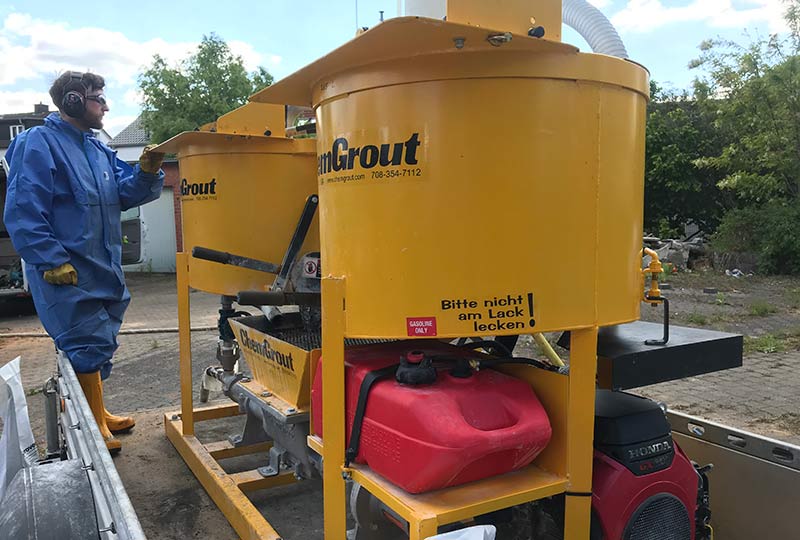
Further information
Direct-Sense Probing
For the exploration of environmental contaminations, we perform direct-sense probing with the Geoprobe drilling rigs LT54, 6620DT and 7822DT:
- MIP-Probing (Membrane Interface Probe)
- EC-Probing (Electrical Conductivity)
- HPT-Probing (Hydraulic Profiling Tool)
Direct-Push Probing
Sensatec conducts direct-push probing with the Geoprobe drilling rigs LT54, 6620DT and 7822DT. The « lost cone » method which is mainly used for infiltration, injection and monitoring in groundwater and in the unsaturated soil zone can be installed quickly and economically. Our range of services includes:
- Liner-Probing with Geoprobe methods MacroCore and DualTube
- Groundwater Probing with the Geoprobe Profiler Probe SP16
- Soil vapour Probing
- Injection lances
In addition, it’s possible to perform targeted injections of additives (based on preliminary MIP probing) for In-situ-remediation directly via the probing rod using special injection cones. Therefore a large number of injection spots and levels can be realized in a very short time.
Injection Technologies
We are suppliers of sophisticated injection technologies. Especially in In-situ remediation, it is crucial for the success that injection systems are well adapted to the complexity of the aquifer in each case. To meet this requirement as far as possible, we offer the following system components:
- Multilevel Injection Systems
- Pressure-resistant, oxidant-resistant fluid injection systems
- Profile Probes
- Supply and installation of In-situ sensor measurement technology
- Gas lance construction
- Execution of injection wells
Sensatec has extensive experience in the application of displacing drilling methods, dry drilling (hollow drill pipe or tubed) and Sonic drill technology.
CONTACT
- Sensatec GmbH
- Tempelhofer Weg 8, D – 12099 Berlin
- Dipl.-Ing. Mark Zittwitz
- Tel.: +49 (30) 809 415 76
- Fax: +49 (30) 809 415 78
- berlin@sensatec.de
Classical Drilling Services
In addition to the mentioned above methods Sensatec provides classical drilling services such as:
- Ramming core Probing
- DPH probing (heavy ramming probe)
- Dry drilling with hollow stem auger (max. diameter 320 mm)
- Construction of wells and groundwater measuring points
For the documentation we create bore log with the program system GeODin. We hand over the created databases to the client / engineering office for further project processing.
CONTACT
- Sensatec GmbH
- Alte Ziegelei 15, D – 51491 Overath
- Dipl.-Geo. Dietmar Raffelsieper
- Tel.: +49 (2204) 9726-0
- Fax: +49 (2204) 9726-20
- koeln@sensatec.de
